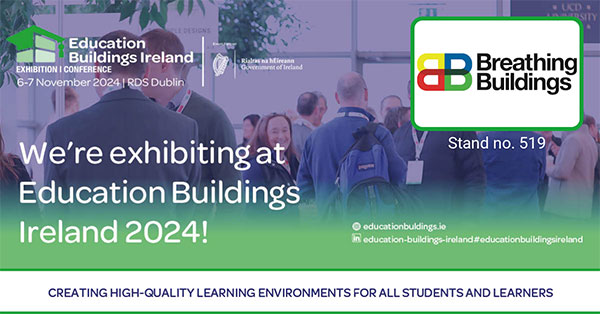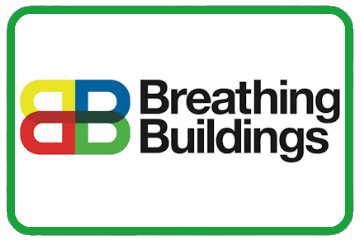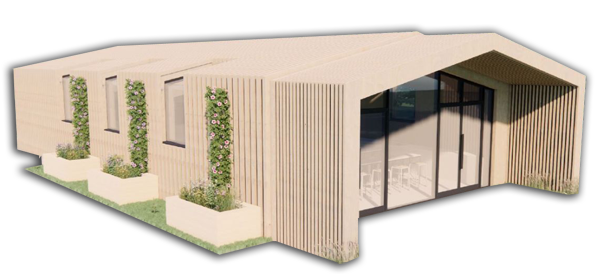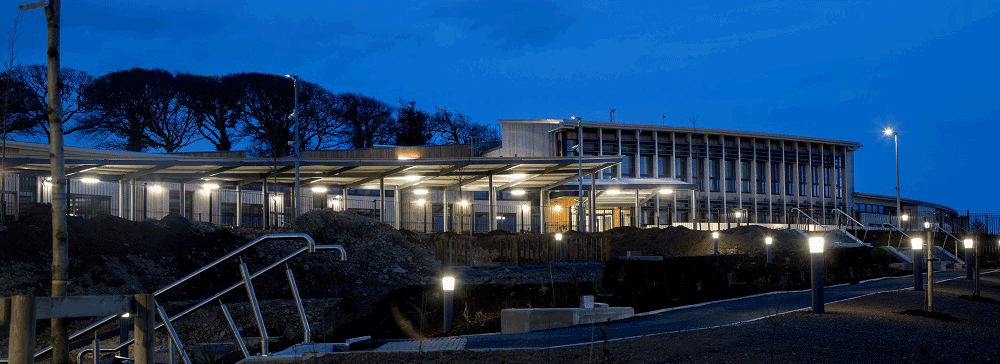 Learning environments are some of the most important places, and the way they function is just as important as how they look. Mark Johnstone, Head of Commercial – UK, Middle East and Ireland, at Altro, considers the key criteria when specifying for primary schools.
Learning environments are some of the most important places, and the way they function is just as important as how they look. Mark Johnstone, Head of Commercial – UK, Middle East and Ireland, at Altro, considers the key criteria when specifying for primary schools.
When it comes to specifying for education environments, there is a greater need than ever for durable, easy to clean, comfortable and attractive surfaces – and thankfully plenty of smart solutions to meet those demands. We have worked through the decades to develop solutions to age-old issues; safety floors to prevent slips; sustainable adhesive-free floors to reduce downtime; shoe and barefoot flooring for safer changing rooms; floors that reduce impact sound reduction for quieter working spaces; and walls and doors that impress, yet don’t compromise on hygiene and easy-maintenance.
Specifiers have a lot to balance. We’re aware of the changing views on learning spaces, for example the positive impact that biophilia – using natural shades, including wood-look options, and images of nature – has on learning. We’re aware of the benefits that adaptable learning spaces and effective way-finding solutions, among other design concepts, have for those with autism or Social Emotional Mental Health (SEMH) needs – and that, actually, these should not only be considered for specialist spaces, as the same things hugely benefit all children.
We understand the challenges of complying with regulations designed to keep our children safe, whether finding solutions that have the required 30-point light reflectance value difference between floors and walls, installing safe disability access ramps, or giving reassurance that our doors and walls meet the required standards for fire resistance.
We appreciate that education buildings are among the busiest public spaces, meaning durability and easy maintenance are essential. We know specifiers must also meet sustainability requirements – there is a lot to take into consideration.

Entrance and reception areas
In primary schools, this area has a variety of functions: it’s an office space, a waiting room and, as the first area of the school that parents and visitors see, a room that represents the school’s ethos. First impressions count here and, as a work space, it needs to be a calm oasis in the surrounding bustle. For ultimate design freedom, consider options such as Altro Whiterock Digiclad (Custom) for walls and Altro Orchestra Custom floors to make your individual mark.
As most people in this area will be coming in from outside, the risk of walked in rainwater, and therefore a slip, is high, so a safety floor will protect students, staff and visitors from slips. There are plenty of great options, including sustainable adhesive-free floors which can halve installation time, and are 100% recyclable pre- and post-installation.
Corridors
Constantly in use by both little and large feet plus equipment trollies, floors for corridors and general circulation areas need to be tough while looking good. These spaces can be noisy as pupils move from one space to another, so impact sound reduction is welcome here, reducing distraction for those still concentrating.
Ease of cleaning is an important consideration, as is downtime in an area that’s in constant use. Ranges such as Altro Operetta, Altro Orchestra and Altro Serenade offer multiple attractive, natural colours and finishes that are robust and easy to clean, with a custom option for a bespoke approach too. Consider adhesive-free options with installation time halve that of a traditionally adhered floor: you can weld and walk the same day, even over fresh concrete. There are no rucks or movement when down, and at the end of its life the entire floor can be uplifted and reused or recycled.
For walls, consider systems such as Altro Fortis wall sheet combined with corner protection – dense, impervious and resistant to bumps, it is ideal for use in these busy, vulnerable areas.
Classrooms
Primary school classrooms go from calm to chaos and back again throughout the day. The floor you choose contends with constant use from 30-plus pairs of feet, activity debris and chair-scraping. It needs to support quiet learning, tired feet, act as the occasional seat and play its part in creating an inspiring space to work and learn in.
A good option here is a vinyl floor with acoustic properties for impact sound reduction and comfort, as well as ease of cleaning and durability.
With a wide variety of activities taking place in the classroom, a sink is a common feature, making splashes and spills and therefore slips, likely. With so much going on, it’s not always possible for teaching staff to spot or wipe spills straight away.
You probably won’t need to install a safety floor for the whole room; you can install just around the sink. Altro safety floors mean you can reduce the risk of a slip to one in a million in that space. You can choose to match the shade to the rest of the floor, or deliberately create a contrast to remind pupils that it’s an area they need to be careful in.
Kitchens
Prepping and cooking hundreds of meals, all to be served within an hour, or less, means school kitchens must operate efficiently and quickly, without compromising on safety. As staff work to get multiple dishes ready, there’s no time to worry about oil splashes or food debris on the floor, which increase the risk of a slip accident. Once prep and service are over, clean-up and next day prep mean there’s no rest for staff feet, so a floor solution that can take the burden of a day spent standing will be welcomed.
Kitchens need a specialist safety floor such as Altro Stronghold 30, designed specifically to deal with these challenges. They also benefit from hygienic wall systems – grout-free, easy to clean and impact-resistant.
Multi-purpose halls/canteens
A primary school hall masquerades as gym, restaurant and conference room. A versatile space needs a versatile floor that can handle changing needs, looks good and provides a comfy seat. This key area for a school can’t be out of action for long, so is an ideal area to opt for our sustainable adhesive-free floors with quick and straight-forward installation over an existing floor, or over new concrete.
An option such as Altro Wood adhesive-free meets each need: a slip risk of one in a million for those lunchtime water spills; 14dB impact sound reduction to help keep outside noise out, inside noise in, and to lessen foot and chair noise within the room; comfort underfoot to go easy on jumping and dancing feet, and on little bottoms; shades to create a warm, comfy look; and no adhesive, halving installation time, with no associated adhesive odours. What’s more, you can reuse it elsewhere or recycle i: the perfect sustainable solution.
For walls, Altro Whiterock Digiclad (Custom) enables a school to put its own stamp on its main space, with durable and scratch resistant properties to look good long-term. Choose from the school logo or photographic images of the children playing sport, or of local landmarks, to inspire knowledge and pride: the possibilities are endless. In addition to photos or art, this walls system can be used to support wayfinding, featuring signage or instructions.
Libraries
Primary school libraries are no longer the intimidating, quiet rooms they once were but, as a space where story-telling comes to life or a pupil curls up to enjoy their first novel, there’s a need to reduce noise distractions, so an acoustic floor that’s thick enough for comfort underfoot is a good option here.
Staff rooms
Staff areas are well used; lots of feet, chairs, desks so the floor needs to be durable. As a space used for work, meetings and well-earned breaks, it needs to look homely and feel comfortable: the floor plays a central part in creating a space where staff are happy to be. With staff areas in constant use, installation or refurbishment needs to be quick and easy, so this is another area where adhesive-free floors can be used to great effect.
Toilets
With no time for staff to constantly monitor the state of the toilets, the floor needs to prevent slips from sink splashes, walked in water and any little accidents, so safety floor is ideal here. It has to be easy to clean, whether a quick wipe or the thorough end-of-the-day clean. Look for slip resistance that lasts the lifetime of the product, to give peace of mind that pupils will be as safe from slips when they leave school as when they started. There is a huge range of colours now available, so it’s possible to make the bathroom more fun, theming the space, or using different colours for each cubicle and the hand wash area.
Hand hygiene is more important than ever, and can be a challenge at primary school age. When it comes to school toilet walls, they can play a role in reducing the number of places bacteria can lurk. Walls need to be easy to clean. Tiled walls are popular, but problematic – with grout present and cracks common, tiles will not support effective hygiene and maintenance. Look to a hygienic walls system, such as Altro Whiterock, that can be wiped clean. Grout-free, impact-resistant, quick to install and backed up by lengthy guarantees. And plenty of colour and design options on offer too.
CLICK HERE for a wide range of tools and resources for specifying in education.
About Altro – www.altro.co.uk










 Learning environments are some of the most important places, and the way they function is just as important as how they look. Mark Johnstone, Head of Commercial – UK, Middle East and Ireland, at Altro, considers the key criteria when specifying for primary schools.
Learning environments are some of the most important places, and the way they function is just as important as how they look. Mark Johnstone, Head of Commercial – UK, Middle East and Ireland, at Altro, considers the key criteria when specifying for primary schools.





